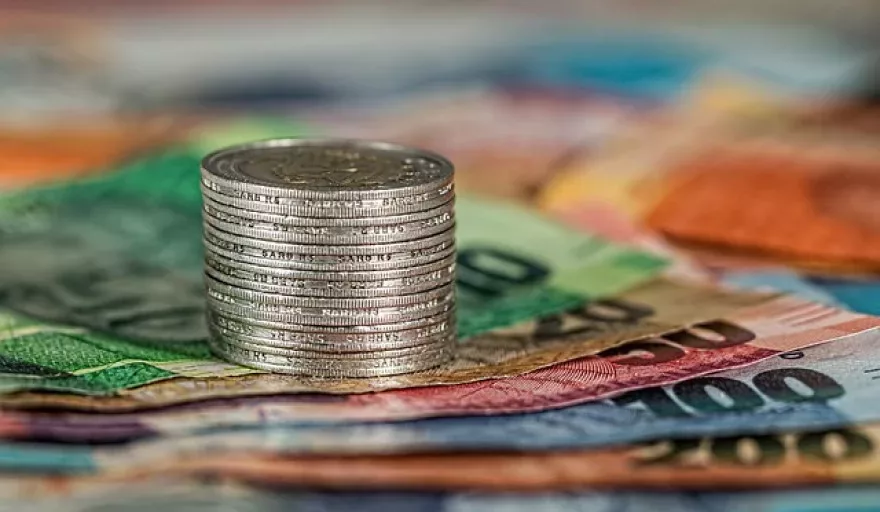INTRODUCTION
If the ASEAN region was a single country it would be the seventh-largest economy in the world, with a combined GDP of $2.92 trillion in 2018. It is projected to rank as the fourth-largest economy by 2050, demonstrating the increasing strength of Southeast Asia’s position in the global trading ecosystem.
Recent trade conflicts could bolster this position. American tariffs on Chinese-made goods are playing a role in accelerating the shift of contract manufacturing to ASEAN countries such as Vietnam and Thailand. What’s more, China’s Belt and Road Initiative (BRI) is helping to propel intra-regional trade, improving connectivity within the region through enhanced infrastructure.
At the heart of this success are local banks – particularly their ability to facilitate local businesses’ efforts to navigate new and existing trade corridors, as well as capture growing opportunities in a rapidly evolving international trade landscape. But to continue their strong performance, they will need to deepen their collaboration with global banks, leveraging their expertise, technological innovation and reach.
PICKING UP THE BATON FROM CHINA
Despite protectionist headwinds, Asia’s overall exports to the US increased by over seven percent in 2018. Both import and export markets in the region are strengthening and countries across the ASEAN are happily picking up the baton from China as a low-cost manufacturing hub, while China moves to more sophisticated forms of high-end production, as well as towards a more consumer-driven economy (a move being accelerated by those trade disputes with the US).
Such shifting dynamics mean that corporates and banks are increasingly looking to diversify their operating models. Already lower-end manufacturers are relocating from China to the ASEAN in particular. Panasonic, for example, is moving its auto stereo production from China to Thailand, and most of Samsung’s mobile phones are now made in Vietnam. In a further boost to Vietnamese manufacturing, Chinese acoustics company GoerTek announced that its production of Apple’s AirPods will move to Vietnam – in part due to tensions between the US and China.
Even as an import economy, the ASEAN region is beginning to reflect its weight – and could well offset any “lost” US exports. The combined ASEAN population is 650 million, making it larger than the EU or NAFTA blocs. Given this, intra-regional trade remains somewhat of an untapped source of growth. For example, intra-regional trade accounts for 50 percent of total trade in East Asia, while in Southeast Asia, the figure is just 25 percent – both significant improvements on previous decades but with a lot of potential for growth.
FURTHER GROWTH REQUIRES TECHNOLOGICAL ADVANCEMENT
Trade finance will be a vital tool in helping advance ASEAN trade growth, both externally and within the region. And this is where the support of local banks is invaluable.
Yet, to help the region reach its trading potential, trade finance requires significant technological advancement. Even from a processing basis, digitalisation – as opposed to paper-based systems – will be of enormous benefit to trade both within and beyond Southeast Asia.
Trade finance has already benefitted from the evolution from paper to electronic communication, and digital solutions have the potential to enhance speed, efficiency, transparency and security across the supply chain. Yet, the electrification of trade still has a long way to go.
Digitalisation will also make collaboration across the global banking network easier, with the information generated within the trade ecosystem more readily available and transmittable. And digitalising trade and data can improve the ability to detect fraudulent activity that may not be as easily exposed through paper. Along with headline-grabbing technologies such as blockchain, optical character recognition (OCR) is a solution that is increasingly being applied by banks to enhance documentation verification – helping to streamline previously inefficient processes such as exchanging and ratifying bills of lading by reading data from a physical document.
TRADE PARTNERSHIPS ARE THE KEY TO SUCCESS
Digitalising processes is key if Southeast Asia is to reach its potential as an economic powerhouse for global growth.
Banks throughout the region are highly receptive to new technologies – recognising the importance of adaptation and innovation in order to sufficiently support their clients’ evolving needs. But the volume and pace of new technological developments can leave many local banks facing challenges, both in resources and in understanding the latest digital trends.
Given this, local banks can harness the advanced technological capabilities, as well as expertise and connections, of specialist global providers through non-compete partnerships. Harnessing the technology, capacity and expertise of global players will ensure that the financial supply chain can keep up with the rapidly increasing volume and complexity of the physical supply chain. It will also bring the added benefit of having a globally experienced intermediary to navigate a trading process that can generate difficulties given the number of counterparties and requirements involved.
Asia is rapidly becoming the most resilient global region with respect to growth. And, with the help of technological advancements and the guidance of correspondent banks, the region could well find the optimal way to enhance trade via a banking system that will need to cope with the coming increase in demand.
*The views expressed herein are those of the authors only and may not reflect the views of BNY Mellon. This does not constitute treasury services advice, or any other business or legal advice, and it should not be relied upon as such.



































